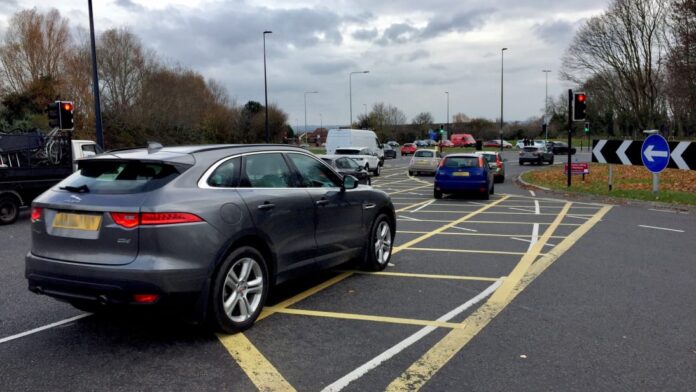With local authorities in England on the brink of being able to apply for powers to enforce yellow box junctions, the RAC is calling on the Government to improve its official design, maintenance and enforcement guidance to councils to avoid thousands of drivers being wrongly fined.
Councils will shortly be able to apply to enforce moving traffic offences, such as driving through ‘no entry’, ‘no left’ and ‘no right’ turn signs and stopping in yellow boxes which are used to prevent gridlock at junctions, from 1 June 2022.
To date, only local authorities in London and Cardiff – and elsewhere the police – have had the power to issue penalty charge notices for these infringements.
While RAC research shows 57% of drivers are generally in favour of yellow box junctions being enforced, it has discovered that many junctions have design flaws which cause drivers to become trapped through no fault of their own, and that some are so poorly maintained that it’s hard to see where the yellow lines start and finish.
Design flaws include junctions that have been installed in completely the wrong places, boxes that are larger than they should be and ones where buildings or street furniture obstruct drivers from seeing where boxes end, making it impossible to assess whether there is enough space beyond the junction for their vehicle to fit into. The situation can be compounded by crossings and stop lines set back which make it even more difficult for drivers to see whether there is space to make it through the junction in one go as they are further away to start with.
The RAC also believes the official guidance in Chapter 5 of the Traffic Signs Manual is generally unsatisfactory as it does not clearly state the specific purpose of box junctions or show how to design them in relation to vehicle movements at junctions, and lacks any information on how they should be maintained and enforced.
The RAC learned of the gaps in the official yellow box guidance when it commissioned chartered engineer Sam Wright, who was formerly responsible for the design and approval of yellow boxes on the Transport for London road network, to write a report explaining how they are enforced in the capital with a view to highlighting the potential confusion that lies ahead as local authorities begin enforcing them.
Sam Wright explains:
“The key design principle is that yellow boxes should be no bigger than is necessary to prevent vehicles obstructing through movements. They are not designed for, and serve no purpose in, situations where vehicles are travelling in the same direction.
“The second main condition is that drivers should have adequate visibility beyond the box to be able to make a clear judgement before entering it. It’s not just that drivers need to see the end of the box, they need to see that there is space beyond the box for their vehicle to fit without any part of it overhanging. In the case of a car that will be 5-6m. For larger vehicles, it will be up to 15m. I think designers should have to take a car out in rush hour to see if they can negotiate the box without stopping, before insisting that others do the same.
“Drivers may also be surprised to hear that there is no legal requirement for authorities to meet this design criteria and it’s simply down to the competence of the enforcing authority.”







